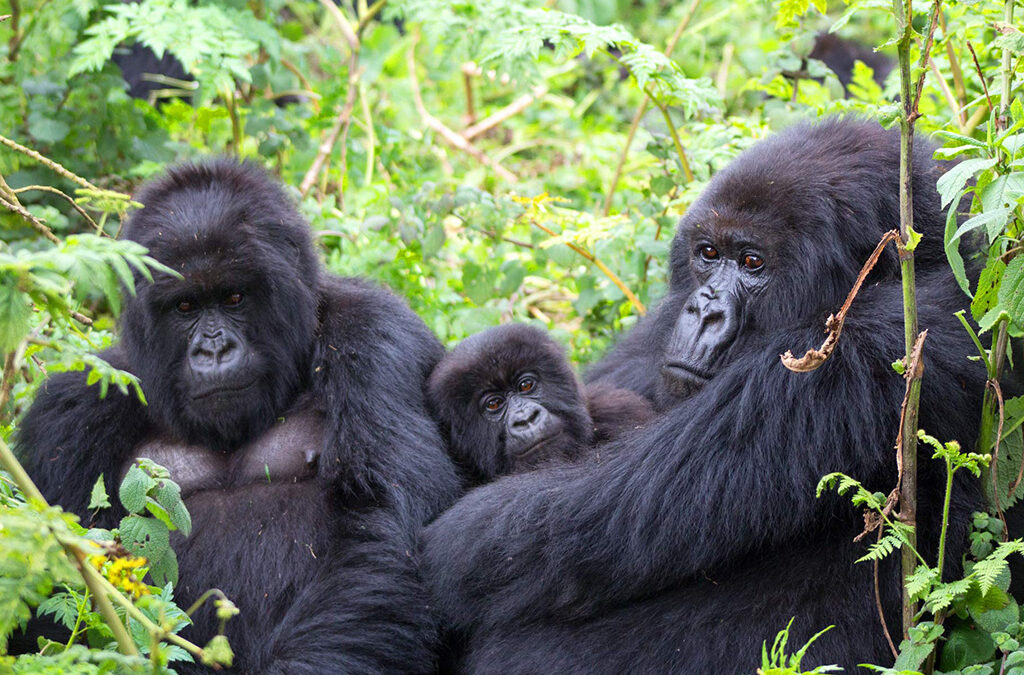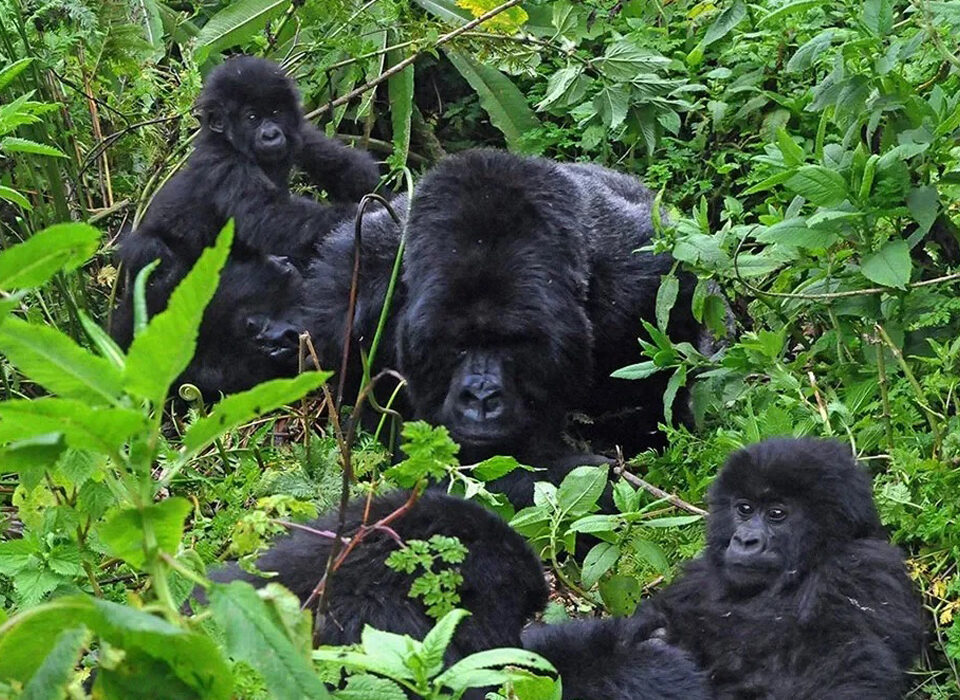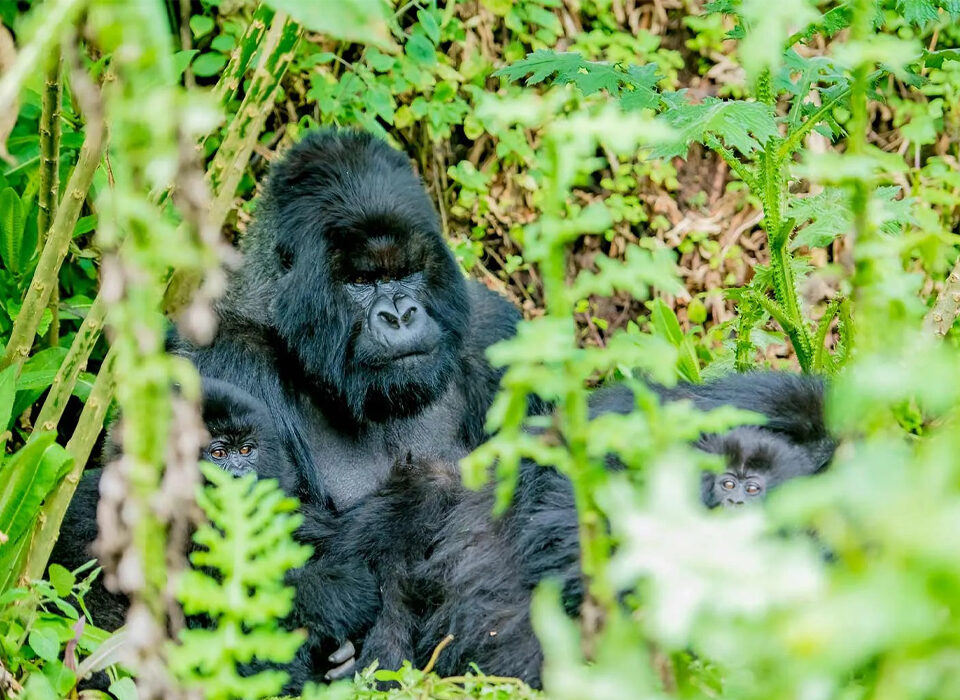- GET IN TOUCH WITH US:
- +256 753518160
- +256 777842166
- info@experiyatourcompany.com

Zip Lining in Nyungwe Forest National Park
August 1, 2025
How to Behave in Front of a Gorilla
August 1, 2025What Makes Gorillas So Special

The Gentle Giants of the Jungle: What Makes Gorillas So Special
When one thinks of the jungle, images of dense foliage, exotic creatures, and untamed wilderness often come to mind. Among the most iconic and awe-inspiring residents of the jungle are the gentle giants – gorillas. These magnificent creatures have captured the hearts and minds of people worldwide, and for good reason. In this article, we will explore what makes gorillas so special, shedding light on their remarkable characteristics, behaviors, and the conservation efforts in place to protect them.
The Gorilla Basics
Gorillas, the largest of all primates, are native to the dense forests and jungles of Central and West Africa. They are divided into two species: the Eastern gorilla (Gorilla beringei) and the Western gorilla (Gorilla gorilla). Each of these species is further classified into subspecies, each with its unique traits.
The sheer size of gorillas is enough to garner attention. Adult males can weigh up to 400 pounds and stand as tall as 6 feet when on their hind legs. These magnificent creatures possess a physique that commands respect in their environment. But it’s not just their size that makes gorillas special; it’s their gentle and social nature that truly sets them apart.
Social Creatures
Gorillas are highly social animals, living in close-knit family groups. These groups are typically led by a dominant silverback an adult male responsible for protecting and guiding the group. The bonds within these family units are strong, and gorillas often engage in affectionate behaviors like grooming and playing with one another.
Their communication is equally fascinating. Gorillas use a complex system of vocalizations, gestures, and facial expressions to interact. They even rely on body postures to express emotions and intentions, a testament to their remarkable cognitive abilities.
Vegetarian Diet and Habitat
Gorillas are primarily herbivores, with a diet consisting of leaves, stems, fruits, and a variety of plant matter. Their digestive system has evolved to efficiently process this fibrous vegetation. Known as folivores, they are capable of consuming vast quantities of plant material each day.
Their habitat preferences are equally vital to their survival. Gorillas are a keystone species, meaning they play a crucial role in shaping the ecosystem around them. By dispersing seeds through their feces and influencing vegetation growth, they have a profound impact on their environment.
Conservation Challenges
Despite their remarkable qualities, gorillas face numerous challenges in the wild. Habitat destruction, poaching, and disease are among the greatest threats. As human populations expand, gorilla habitats continue to shrink, forcing them into smaller areas. This often leads to increased human–gorilla conflict, further endangering these creatures.
Poaching for bushmeat and the illegal pet trade also poses severe risks. The loss of even a single gorilla can have far-reaching consequences for fragile populations.
Disease outbreaks, particularly Ebola, have devastated gorilla communities, leading to significant population declines in some regions.
Conservation Efforts
Fortunately, many dedicated organizations and conservationists are working tirelessly to protect gorillas and their habitats. National parks and reserves have been established to safeguard them, while educational programs and research initiatives raise awareness of their importance and the threats they face.
Tourism also plays a role in funding conservation efforts. Responsible gorilla tourism allows visitors to observe these great apes in their natural habitat, providing income for local communities and an incentive to protect both the gorillas and their environment.
Conclusion
Gorillas are the gentle giants of the jungle, captivating us with their immense size, social nature, and remarkable behaviors. They hold a critical place in their ecosystems, shaping the lush jungles they call home. Yet they face significant threats, including habitat loss, poaching, and disease.
Conservation efforts are making progress, but protecting gorillas requires continued global commitment and support. By understanding what makes gorillas special and recognizing their vital role in the natural world, we can help ensure that these gentle giants continue to thrive in the wild reminding us of the incredible diversity of life on our planet.



